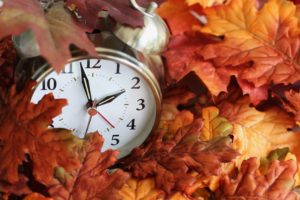
The end of daylight savings time can spell big news for people with Seasonal Affective Disorder (SAD), a condition that strikes roughly two-percent of the population. In most cases, it’s brought on by the short, dark days of winter. Symptoms are aligned with typical depressive symptoms—fatigue, trouble sleeping, anxiety, inexplicable weight loss, aches, pains, and more—but only occur seasonally. Once the temperature warms and the days get longer the symptoms tend to subside.
Based on the severity of symptoms, there are a variety of potential treatments that might help. For those with mild-to-moderate symptoms, some simple planning might go a long way. Booking time with friends to socialize, scheduling outdoor-time into your day—or sitting by a window during morning coffee or while reading the paper—might be enough to combat symptoms.
Getting out to take advantage of seasonal activities like winter festivals, snowshoeing, ice skating. and more could be enough to get you over the hump. There is research to support the idea that physical activity can work as well as medications in people in mild-to-moderate depression.
Darker days can affect people by messing with their circadian rhythm, or the sleep/wake cycle. This can influence the production of two major hormones associated with mood and sleep: serotonin and melatonin. One theory holds that the increased darkness leads to overproduction of melatonin, which results in increased fatigue and sleepiness. The other suggests that serotonin drops because of the darker climate, leading to symptoms like depression, anxiety, and poor sleep.
Lightbox therapy is often prescribed for SAD, which can administer in a couple of ways. One is to slowly increase light in the bedroom, so it’s like waking up with natural sunlight. The other is to sit in a room with a powerful lightbox in the morning, while reading the paper or eating some breakfast. These therapies, like exercise, may help regulate circadian rhythm and hormone production to improve mood and energy levels.
Lastly, certain herbal and nutritional supplements may help, as well. These include B-vitamins, SAMe, St. John’s Wort, omega-3 fatty acids, and vitamin D.
Therapies for SAD ultimately come down to the severity of individual symptoms. If you notice a mild-to-moderate downturn in your mood once the shorter days hit, try some of these at-home therapies to help boost your mood through the fall and winter.